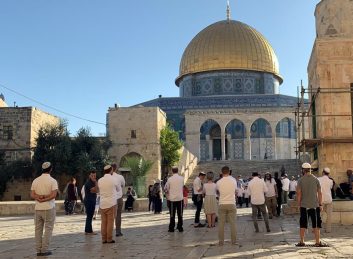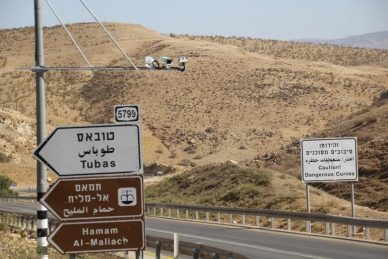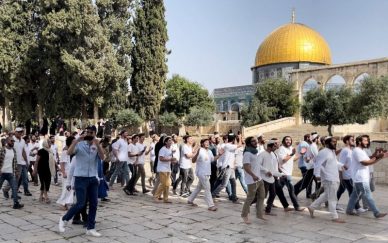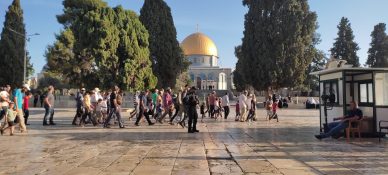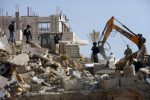The Palestinian town of Sebastia north-west of the city of Nablus has been the focus of the Israeli settlement groups in recent weeks which is a dangerous indicator of their plans to fully control archaeological and tourist sites in Palestine.
The town is a religious attraction because the tomb of John the Baptist (who is known in Islam as Prophet Yahya the son of Prophet Zakaria peace be upon them) is located there. It is believed that the body of Prophet Yahya is found in a mausoleum near an old mosque in the center of the town while his head was buried in the Syrian capital Damascus.
Obstacles of the Oslo Accords
Secretary of the Municipality of Sebastia Qadri Ghazal says that the town which is inhabited by about 3000 Palestinians has been classified as areas C and B according to the Oslo Accords which constitutes a major obstacle in the face of development of the archeological site stressing that the Israeli authorities prevent them from working in the site because it is located in area C and seeks to control it.
Furthermore the municipality seeks to encourage internal and external tourism through a process of linking the archaeological site with the town. It also works to renovate many houses and make use of them for tourism purposes to secure financial gains for the village as well as to establish recreational and historical centers in order to preserve these monuments.
Repeated intrusions
Ghazal added that the town suffers from the Israeli settlers’ daily incursions into archaeological and tourist sites which aim to eliminate the Palestinian identity deport the population and impose the Jewish character on the site.
Khaled Tamim a researcher and expert on Palestinian archeological sites says that the settlers’ ambitions to control the town are not the result of recent weeks but rather it is a plan that goes back many years ago but what is increasingly noticeable is the increasing number of settler incursions into the Roman columns and the Byzantine church.
The vendors of heritage items embroideries and antiques are complaining about the lack of purchase power in recent months due to the lack of a policy of encouraging tourism from the official authorities and the removal of the town from historic sites by the Israeli occupation when tourists visit Palestine.
The most important sites in Sebastia
The most important and prominent archaeological sites of the town of Sebastia according to the municipality of Sebastia are:
– Basilica and the Roman Bayader a stone-paved square with a rectangular row of columns a line of bases to the west and paved paths with mosaics.
– Theater: It is located in the middle of the Piazza.
– Temple of Augustus: It contains fourteen rows of stone-paved seats dating back to the second century AD.
– The Hellenic Defense Tower: a watchtower the first line of defense for the village of Sebastia dating back to the 4th century BC and some of the remains of its pillars could be seen among the olive trees.


